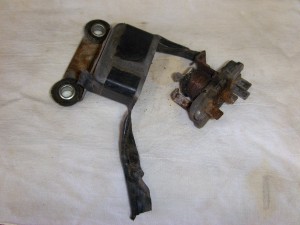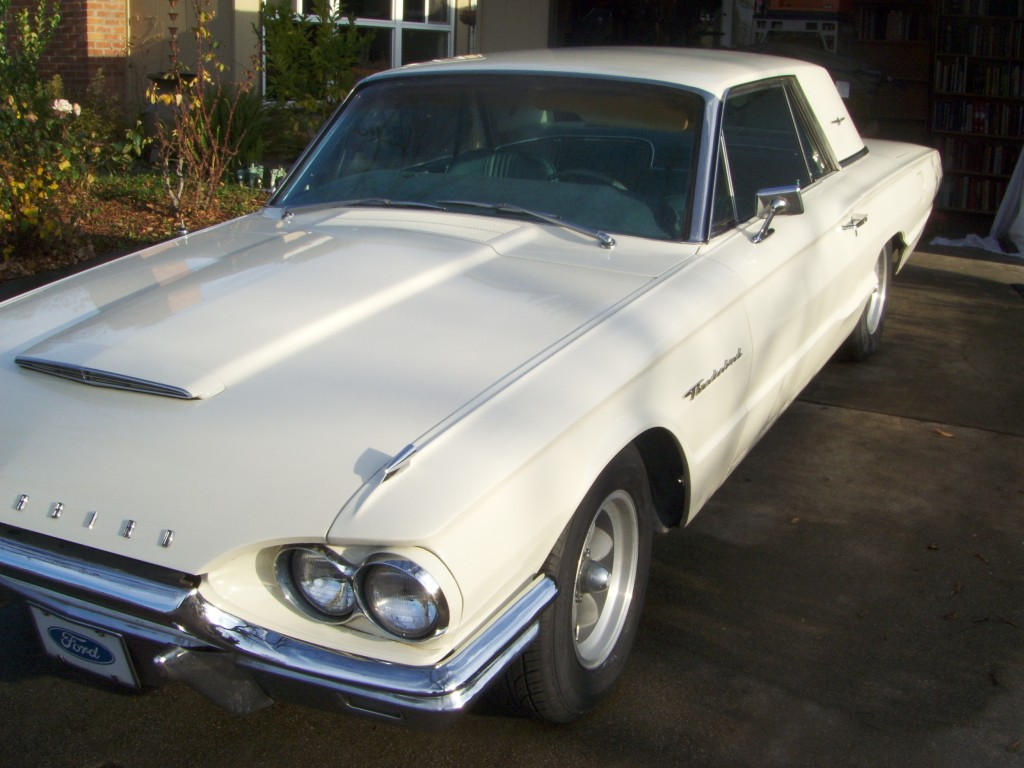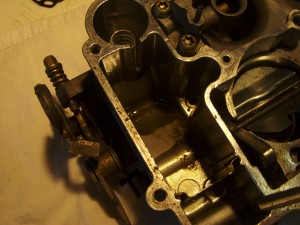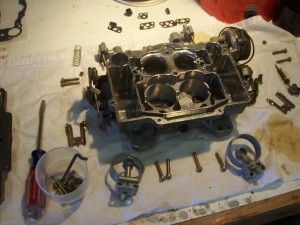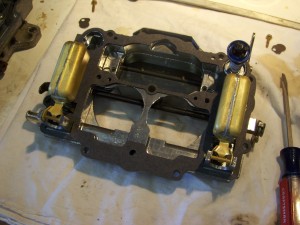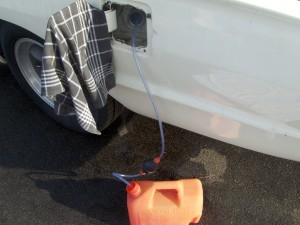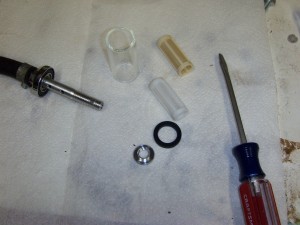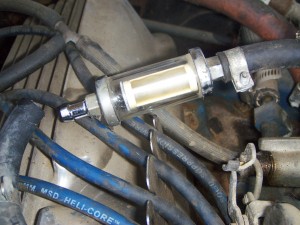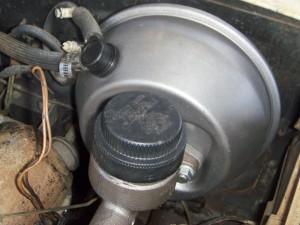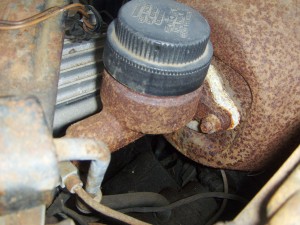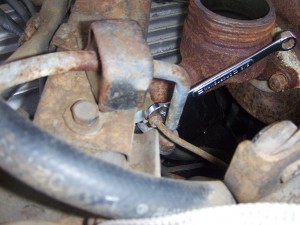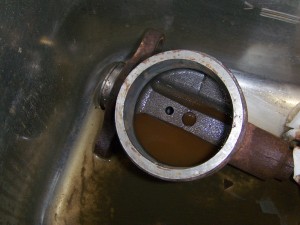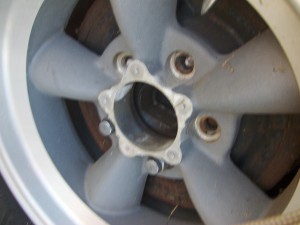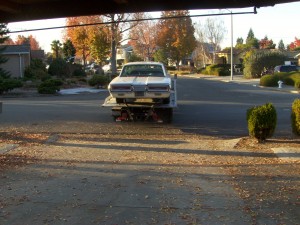While I wait for parts to arrive for the brake lights (and the shifter, but that’s another story), I’m working on some smaller, but still important fixes.
Rear View Mirror
I found the components for the mirror in the center console “glove box”, including the button (normally glued to the windshield), the mirror and the the clamp that holds them together. They are a little worn and rusty, but still better than nothing. I used a Permatex product to glue the button to the windshield, and dropped a bit of cloth adhesive tape in the clamp (which was a little loose) to tighten up the assembly when I put it all back together.
License Plate
This is a black plate California car, meaning that it has the original plates issued in 1964. The front plate is gone, and the back plate was only held on with a single screw. I put in anoher nylon nut, added another screw and straightened the plate a bit before putting it all together.
Wiper Blades
It took three trips to the auto parts store to get the correct blades. Unlike modern cars, the T-Bird’s windshield is fairly upright and requires short wiper blades. The catalog at the parts store said 18 inches, but they were 2 inches too long. The next set I got were narrow (who knew?), but the third trip was the charm (although the correct length and width had to finally be special ordered).
Throttle Linkage
This may need to be the subject of its own post. I noticed right away that the push-rod from the throttle didn’t connect properly with the gas pedal. Indeed, it didn’t connect at all. Taking the assembly out of the car, it looks like a bracket is missing, which is also causing the linkage assembly to bind up. I believe I can fabricate a bracket to set matters straight. More on this item to follow . . .

